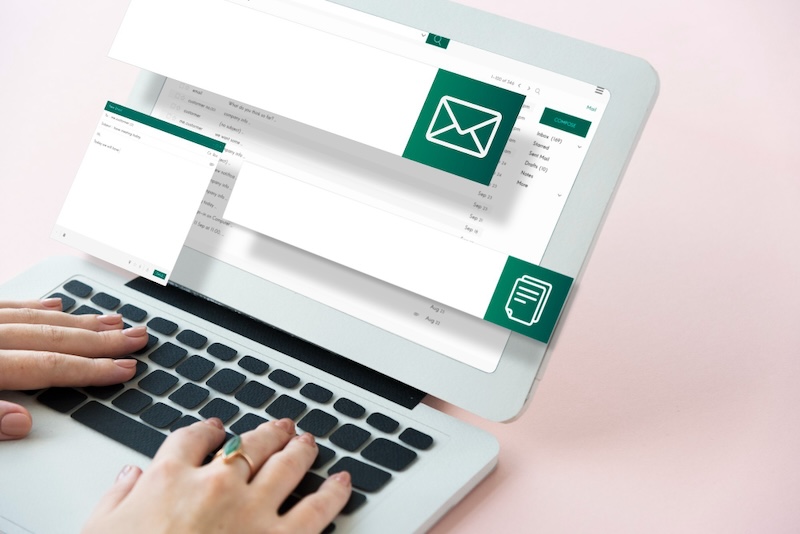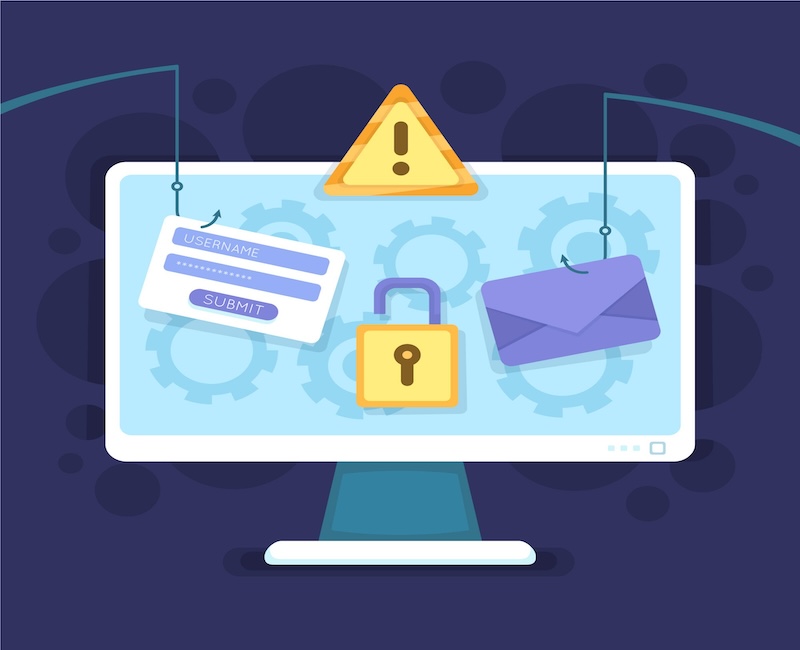So, you had a productive call with a potential customer. They think your service would be an excellent fit for their business and are willing to commit long-term. You thought you were making progress, but then … you hear nothing back from them.
Should you send them a follow-up message?
In this guide, we’ll go over the basics of sending follow-up emails, including when and how often you should follow up and some effective tips to ensure that your follow-up emails land in your prospect’s inbox.
What is a Follow-Up Email?
You would send a follow-up email to a customer you’ve contacted before via a phone call or cold email outreach.
Most sales professionals send follow-ups at crucial stages in the sales cycle to gather information or encourage the lead to take action to continue their customer journey.
How Many Follow-Up Emails Should You Send?
Many marketing and sales experts have varying opinions on how many follow-up emails are too many and what the magic number really is. But let’s look into some key trends first:
- Research shows that only 24% of sales emails are opened (source).
- 44% of sales teams give up after a single follow-up (source).
- 63% of prospects inquiring about your business will not purchase for at least three months, and 20% will take more than a year to buy (source).
- Also, 92% of salespeople stop emailing after four “no’s,” and 80% of prospects say “no” four times before they respond positively (source).
It’s important to know that a deal is rarely made after the initial follow-up, and the golden rule is to send one four times after your first follow-up email. This makes sense because most successful deals happen on or after the fifth try by. Also, since the average person receives 126 emails daily, there’s a big chance that your initial follow-up email got lost in the crowd.
![]() Courtesy of Freepik/storyset
Courtesy of Freepik/storyset
Now that you know the optimal number of follow-up emails you should send, the next question is when to send them.
It’s important to know that there’s no “one size fits all” approach to cold email sequences, and each sales team will have a different follow-up process. Here are two simple follow-up email sequences that you can follow.
Inclusive Follow-Up Sequence
You can follow this email sequence on most prospects who haven’t responded to your cold email campaign. Sending a follow-up to these leads will remind them of the value your brand provides and encourage a response. Here’s how you can do this:
- Send your initial cold email: Remember to keep everything concise for this email. Include pain points to grab their attention, add value by offering solutions to their problem, and use a clear call-to-action. It’s also crucial to introduce yourself properly, personalize the email, and maintain a conversational tone to gain trust.
- Send an assertive reminder (after 2 days): It’s natural that your initial email might go unnoticed for several reasons. Sending your first follow-up email after three days is ample time; remember to apply a convincing tone and ask if they saw the solutions you offered in your first email.
- Send a message with relevant content (after 3 days): Including relevant content in your follow-up emails is a proven strategy to increase engagement. On your second follow-up, try including white papers and case studies to interest them.

- Send a “trying to reach out” message (after 3 days): If you’ve failed to get a response from the prospect after your previous email, you can now send a “trying to reach out” on your third follow-up email, applying a CTA, and a firm tone to reconnect with them and gain their attention to your previous follow-ups.
- Send a final break-up email (after 4 days): After sending several follow-ups with no avail, it’s time to send a break-up email on your final follow-up. You can include a phrase or question in your subject line like “What do you recommend as a next step?” or “What could have changed your mind?”
Oddly enough, your fourth follow-up will likely generate a message or an answer from the prospect since those questions create a fear of missing out (FOMO) effect, persuading them to point out some things that could have made them agree to your offer.
This simple timeline is efficient and scalable wherever your leads are in the sales funnel. When followed correctly, you’ll build consistent rapport with your prospects, leading to increased open rates and their continued interest in your brand.
Professional Follow-Up Sequence
If you have an established relationship with a lead, you can proceed with a strategy that requires more follow-up emails than usual. You’ll also have to consider the prospect’s importance, reputation, and risk before applying a persuasive follow-up approach.
Try following this email sequence on a time frame of seven days or longer:
- Initial interaction (first cold email)
- First follow-up email (after 2 days)
- Second follow-up with a clear CTA (after 4 days)
- Third email with more value (after 4 days)
- Fourth follow-up message mentioning a trigger event (after 4 days)
- Final break-up email (after 5 days)
Finally, remember to make every follow-up different to avoid being marked as spam. You can check your email spam score to see if your emails are at risk of landing in the spam folder.

How Can You Write Effective Follow-Ups
Knowing the right amount of follow-up emails to send and when to re-engage with your prospects is only half the battle. But learning to create the ideal follow-up message sets your email apart from the hundreds of marketing messages they see daily.
Here are some practical tips that will help you create the perfect follow-up for your cold email campaigns:
Prioritize Giving Value
Your follow-ups aren’t the place for overviews of your product and what it offers. Instead, go straight to the point on creating value for your prospect and their business. Here are two effective ways to make your follow-up messages immensely beneficial to your recipients:
- Success Stories – Success stories or client testimonials are narratives about a former or current client’s positive opinion about your business, usually to gain interest. About 72% of customers trust a business more after viewing a positive review, so it’s a proven way of getting your recipients to respond.
- Case Studies – Compared to success stories, case studies are powerful because they offer more context. They explain in detail how one of your clients solved an issue backed by data insights. Case studies allow you to grab attention and give value to your prospects by letting them understand how your solution works for their business.
Create a Killer Subject Line
Did you know that 47% of email recipients decide to open their emails based on the subject line? This is relevant to cold emails and follow-ups because it’s the first thing your prospects see. A killer subject line grabs the recipient’s attention and will be vital in boosting your total reply rate and closing more deals.
Below are two tricks to create attention-grabbing subject lines for your follow-up emails:
- Mention your value right away – As you might know, having value in your emails can mean the difference between getting ignored and a high average reply rate. You can mention your solution to their challenges in the subject line. If you’re giving free cheat sheets, ebooks, or a product demo, include it there as well.

- Keep it real – It’s necessary to be real and straightforward with your subject line to maintain trust. Make it brief (no more than 9 words and 3 punctuation marks) to avoid truncation, and personalize it as much as possible. Also, avoid tricking your prospects into opening emails, as this might risk annoying them and may cause your email to be flagged as spam.
Personalize Your Follow-Ups
Nowadays, personalization is crucial in every cold outreach and sales effort. Personalizing your email campaigns helps produce 20% more sales opportunities than non-personalized ones, so always consider making your outreach and follow-up emails personal to your recipients. Here are some ways to do this:
- Personalize your email body – Sending a generic or mass-sent email message is one of the worst mistakes to make in follow-ups. To avoid this, add relevant recipient data (e.g., their name, company, position, etc.) and mention some events or places you’ve previously met to gain familiarity. This gives them an impression that you’re a real person worthy of their time.
- Place a relevant call-to-action – Ensure that your follow-up includes an appropriate call-to-action to gain engagement and move your relationship with the prospect. An effective CTA can be an invitation to an event, a confirmation about a scheduled call, or a reminder about your previous follow-ups.
Steer Clear of the Spam Folder
Your sales follow-ups won’t be effective if your emails keep landing in the spam folder. Here’s how you can prevent your follow-up emails from being labeled as spam:
- Avoid spam-triggering lines – If your subject lines are filled with misleading and spammy phrases like “order now,” “make $$$ today,” “act today,” etc., they will likely be heading into the spam folder. Also, emails with too many punctuations, capitalizations, attachments, and too-good-to-be-true statements are red flags for spam filters, so it’s best to avoid them to get an answer from your prospect.

- Avoid aggressive follow-ups – While the key to sending follow-ups is to stay on top of your prospects’ minds, it isn’t ideal to be aggressive by sending out too many emails. Instead, we recommend you wait for 2-3 days before sending your next follow-up message, similar to our email sequence earlier.
Note: If you want to ensure that your emails land in your prospect’s inbox and avoid spam, try InboxAlly. Their robust reporting features allow you to track where your emails land, letting you know what email strategy works best. Explore our core features today.
Final Thoughts
Compelling follow-ups are critical to gaining leads and building better relationships with loyal customers. However, knowing when and how many emails to send is only half the battle; refining the critical parts of your follow-up emails through personalization, nailing the subject line, adding value, and avoiding spam is also vital for their effectiveness.
Ensuring your follow-up emails are landing in the recipient’s primary inbox is necessary for your sales process. For this, we recommend InboxAlly, a reputable email deliverability tool. Their features allow you to increase your campaign’s email deliverability and open rates, resulting in more engagement and replies.
Interested in using InboxAlly to increase replies to your follow-up emails? Check out our core features now and say hello to increased response rates today!